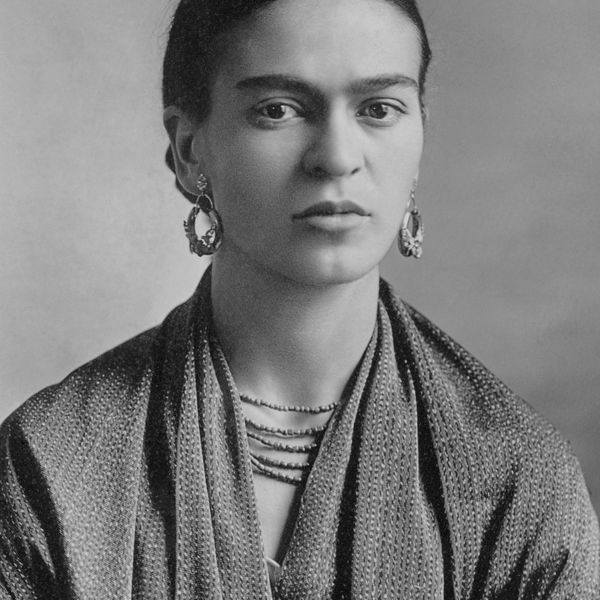Frida Kahlo’s Biography
Throughout her life, beginning at the young age of six, Frida had several physical health complications which had a large impact on her life. It is commonly portrayed that Frida found her cultural and gender identity through her 143 pieces of unique art. She painted many pieces, often using bright and vibrant colors. Her work typically ranged from portraits of herself and others, sometimes consisting of an element of wildlife or Mexican culture.
When Frida turned six, she had polio. At a young age, the disease had a large effect on her abilities. She eventually turned out to have one leg shorter than the other which made athletic activities incredibly challenging. Despite the common belief that Frida would be unable to do many childhood things, she carried on to swim and ride bikes just like any other kid.
Frida began painting in her late teens as a result of her involvement in a horrific bus crash at age eighteen. After the bus incident, Frida’s life changed forever, due to the fact that she suffered a life-altering amount of injuries. Frida was traveling on the public bus when a collision occurred, she was impaled with a handrail through her back and out the other side of her body. Frida also shattered her foot, broke her collarbone, leg, two of her ribs, and dislocated her shoulder. She had a long road of recovery ahead, so, this was when she began focusing on painting as an outlet. Over her recovery period, she had thirty operations to help repair the damage, however, she was left paralyzed. She depicted her crash injuries in her painting called “The Broken Column” which shows her using a surgical brace. Frida’s crash not only started her art career but the impact the bus crash made on her was also shown through her work.
Later in life, Frida met her future husband; Diego Rivera in 1922 while he was painting a mural at her high school. They came in contact once again in 1928, got married in 1929 and moved to San Francisco in 1930. They often traveled or even moved due to Diego’s art opportunities and jobs. Diego’s work brought them to San Francisco, New York, and Detroit. The Rivera’s marriage was filled with many ups and downs, they moved often and swayed apart and back together many times, living separate lives even as a couple. In time, Frida divorced Diego in 1939, but they ultimately remarried in 1940.
Near the end of her time, Frida had more health issues leading to her death in 1954. She spent over eight months in the hospital during the middle of the century, ending in a leg amputee in 1953. Frida became deeply depressed towards the end of her days and revisited the hospital in April of her death year due to an unspecified reason, sometimes indicated as a suicide attempt. Two months later she was at the hospital for a final time when she was diagnosed with pneumonia.
Conclusion
Despite the many tragedies of Frida Kahlo’s lifetime, she continued to paint. Her work is seen as an emotional outlet for all that her life endured. In addition to her work, she was known for her beautiful dresses she often wore paired with large flowers in her hair. Her work showed the world the extent of her personality, beliefs, and tragedies and will forever be remembered.

